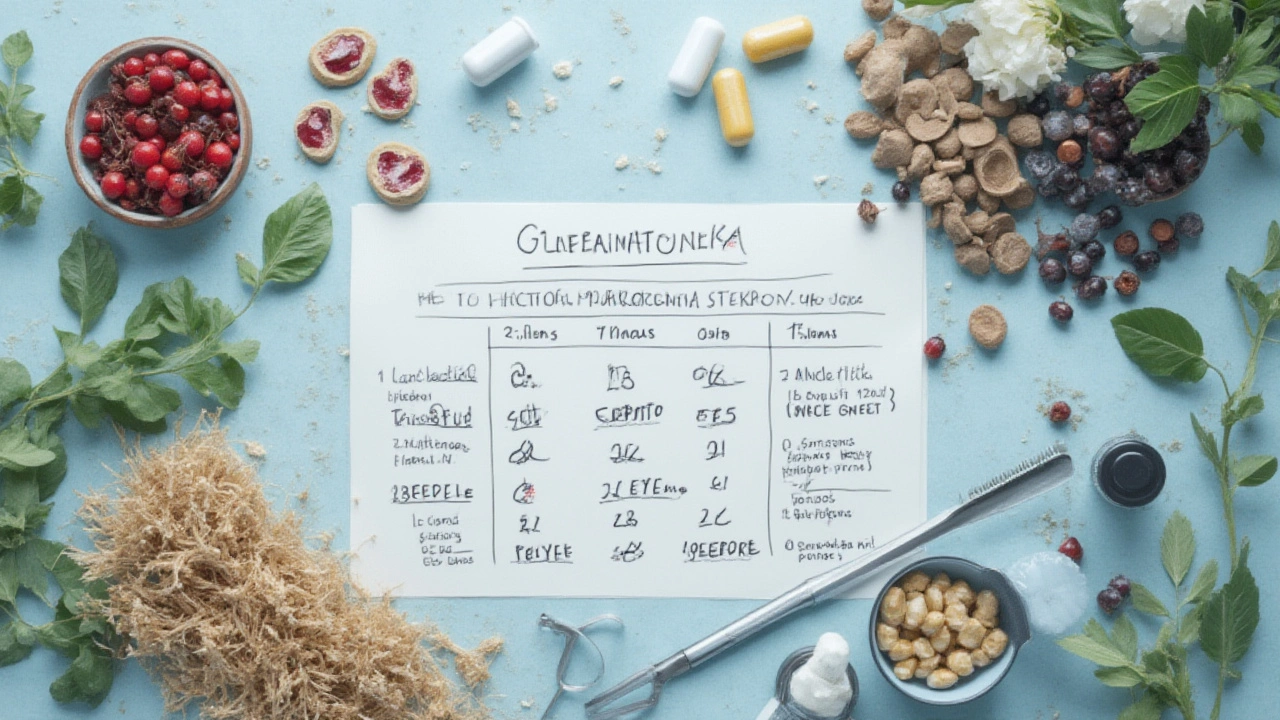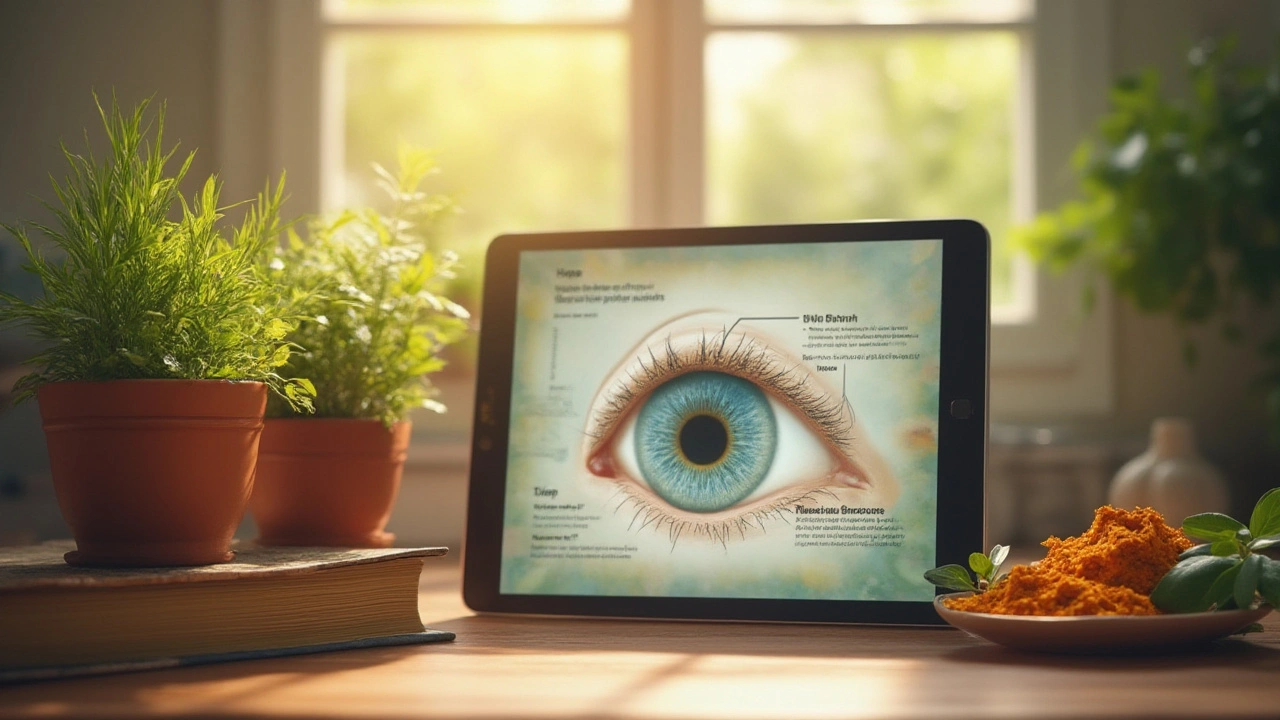Did you know Timolol, that common eye drop for glaucoma, actually shows up in your spit after just one dose? No joke—researchers found traces in the saliva of patients only minutes after use. It kind of makes you wonder: is there a way to manage glaucoma without piling up synthetic meds?
People have started hunting for options outside the pharmacy, looking for natural ways to tame eye pressure and keep their vision sharp. It's not about ditching your doctor or throwing out your prescription—it's about adding some science-backed, less-talked-about tricks to your toolbox. From herbal extracts to simple tweaks in what you eat, the world of natural glaucoma management is full of wild facts and surprising potential. Grab a fresh perspective—you might just see things differently by the end.
Why People Seek Natural Alternatives for Glaucoma
Let’s get honest: Glaucoma is scary because it’s sneaky. You don’t feel the pressure rising in your eye, and by the time you notice, damage is already done. Timolol works by lowering intraocular pressure, but side effects—fatigue, low blood pressure, and even breathing trouble—push many folks to look for something gentler on their system. The way your body processes drugs is personal; for some, the risk feels just as weighty as the disease. Plus, statistics show that up to 40% of patients wind up with dry eyes or other annoyances after using beta-blocker drops. Imagine blinking every two minutes just to stay comfortable!
Natural alternatives attract attention for another reason: control. When you tweak your diet, try meditation, or brew up herbs, you play an active role in your health. One interesting fact—Japanese green tea drinkers show slightly lower risks for certain eye diseases, according to a 2022 cohort study. Green tea’s antioxidants may offer some protection, but it’s not a magic bullet. People chase alternatives because they want something sustainable, affordable, and with fewer daily hassles. Speaking of affordable, 2019 Medicare data revealed the average monthly cost of topical glaucoma meds can hit $68. Compare that to a bag of flaxseed at your local store. Of course, savings matter, but safety and real results matter more.
Friends and family mean well when they suggest vitamins or natural supplements. But there’s more to natural alternatives than just popping a pill. Plant extracts, lifestyle adjustments, and stress management all play a role, but you need data to back it up. The number of Americans over 60 expected to face glaucoma is projected to hit 6.3 million by 2050. That’s double today’s numbers! The pressure (pun intended) is on to find proven, accessible options for a whole aging population. Doctors are starting to pay attention, too—a 2023 survey showed nearly 30% of eye specialists now discuss non-prescription eye approaches with their patients. It’s about opening up the conversation and combining the best from science and nature.

Herbs, Nutrients, and Foods That May Help with Eye Pressure
So, what’s out there in the world of edible solutions? For starters, ginkgo biloba gets a lot of buzz. Studies have pointed out that ginkgo’s ability to boost blood flow might help nerves inside the eye keep working even when pressure creeps up. A double-blind trial in South Korea found glaucoma patients who took ginkgo for four weeks showed improved blood flow to their optic nerve. But heads up—if you’re on blood thinners, taking ginkgo could be risky. Always double-check interactions before you mix things up.
Then there’s bilberry, cousin to the blueberry. It's loaded with anthocyanins—those purple pigments that fight free radicals. A study from Italy in 2021 saw a modest pressure-lowering effect in glaucoma patients after bilberry extract supplementation. Nutty, right? The difference wasn’t dramatic, but it’s promising. And if you love kitchen experiments, garlic, onions, and leeks—common in Mediterranean diets—seem to lower blood pressure and may have a spillover benefit for eye health.
Now, omega-3 fatty acids, like those found in sardines, salmon, and flaxseed, keep showing up in research. The OMEGA-EYE study tracked 200 glaucoma participants and saw a small but real drop in pressure for those who upped their dietary omega-3s. It’s not just fish—chia seeds, walnuts, and seaweed belong here too. Bioflavonoids—especially found in green tea and citrus—may help support tiny blood vessels in your eye. Add in leafy greens like kale and spinach, which are full of lutein and zeaxanthin, and you might give your eyes a real boost. Lutein and zeaxanthin help filter harmful blue light, which can strain already stressed eyes.
| Natural Option | Potential Benefit | Study or Data Reference |
|---|---|---|
| Ginkgo biloba | Increased optic nerve blood flow | South Korea, 2022 Double-Blind Trial |
| Bilberry Extract | Antioxidant, reduced eye pressure | Italy, 2021 Study |
| Omega-3 Fatty Acids | Lowered intraocular pressure | OMEGA-EYE Study, USA 2020 |
| Green Tea | Eye vessel health, antioxidants | Japan, 2022 Cohort Study |
| Leafy Greens | Filter blue light; support vessels | USDA Research, 2019 |
Should you skip straight to the supplement aisle? Not so fast. Doses, purity, and sourcing matter so much. It’s easy to end up with a capsule full of fillers or a dose that’s way too high. Your food choices can be just as powerful as pills. Trying a daily smoothie with spinach, berries, flaxseed, and a dash of citrus can be delicious and functional. And don’t forget water—staying hydrated actually helps maintain the right balance of fluid in your eyeballs. It’s not complicated, but it’s easy to forget when you’re busy and distracted.
If you’re into precise numbers, experts suggest aiming for at least 1.1 grams of omega-3s daily and 6mg each of lutein and zeaxanthin for eye protection. Track labels, experiment with recipes, and see what sticks. Your taste buds—and your eyes—may thank you. Just make sure your routine is something you can keep up long term.

Building a Well-Rounded Approach: Lifestyle, Mindfulness, and Medical Partnership
Food gets all the hype, but what about daily habits? If you're glued to screens for hours or sleep only five hours a night, you’re making things tougher for your eyes. Sleep matters a lot. There’s a direct link between disrupted sleep, high stress, and increased eye pressure. A major European sleep-and-glaucoma survey from 2022 showed patients with sleep apnea had up to double the risk of worsening pressure spikes. So yeah, those snoring fits aren’t just annoying—they’re actually risky for your sight.
Meditation, yoga, deep breathing: these aren’t just for bohemian types. Practicing mindfulness drops your stress hormones, which can help keep your blood pressure—and sometimes your eye pressure—more stable. In 2023, a Canadian study looked at glaucoma patients using guided imagery meditation. After just eight weeks, half of them reported noticeably steadier pressure readings on home monitors. Not every practice fits every person, but playing around with simple routines—like five minutes of slow breathing before bed—can set up your nervous system for better control.
Exercise shows big promise, too. Activities that get your blood pumping—without putting your head below your heart—make a difference. So, brisk walking? Go for it. Headstands or full-on powerlifting? Probably not, since flipping your body upside down actually spikes eye pressure. Even simple chair yoga or a stroll with friends counts. Aim for about 150 minutes a week, which is the gold standard for heart health and gets your eye vessels staying strong.
Here’s the truth: mixing natural remedies with your regular eye drops gives the best of both worlds. Skipping prescription meds without clearance can backfire—over 60% of people who stop meds on their own land back in their doctor’s office with vision changes. Your doctor can help you track changes and keep an eye (pun intended again) on safety as you experiment with new foods or supplements. In fact, modern glaucoma clinics are way more open to talking about things like ginkgo, omega-3s, and even acupuncture as part of broader care.
If you want tips that work and last, try this game plan:
- Stick to your prescribed drops or meds unless your doctor says otherwise.
- Add omega-3-rich foods, like fatty fish, nuts, and seeds, a couple of times a week.
- Drink green tea, enjoy a handful of berries, and load up your meals with leafy greens.
- Practice five-minute mindful breathing twice a day—set an alert on your phone if you need a nudge.
- Get moving with regular walks, but avoid exercises that flip you upside down.
- Keep a journal of your sleep, stress, food, and eye symptoms to spot any links.
- Check in with your eye doctor about everything you're trying. Even over-the-counter stuff can interact with your drops.
The numbers don’t lie: with millions expected to develop glaucoma as we all age, mixing smart lifestyle tweaks with meds just might keep more people seeing life in full detail. Nature isn’t a replacement for medicine, but it’s an ally with real science to offer—if you know where to look. The quest for safe, natural glaucoma support is very much alive—sometimes, the best vision comes from trying a little bit of everything and seeing what helps you most.
